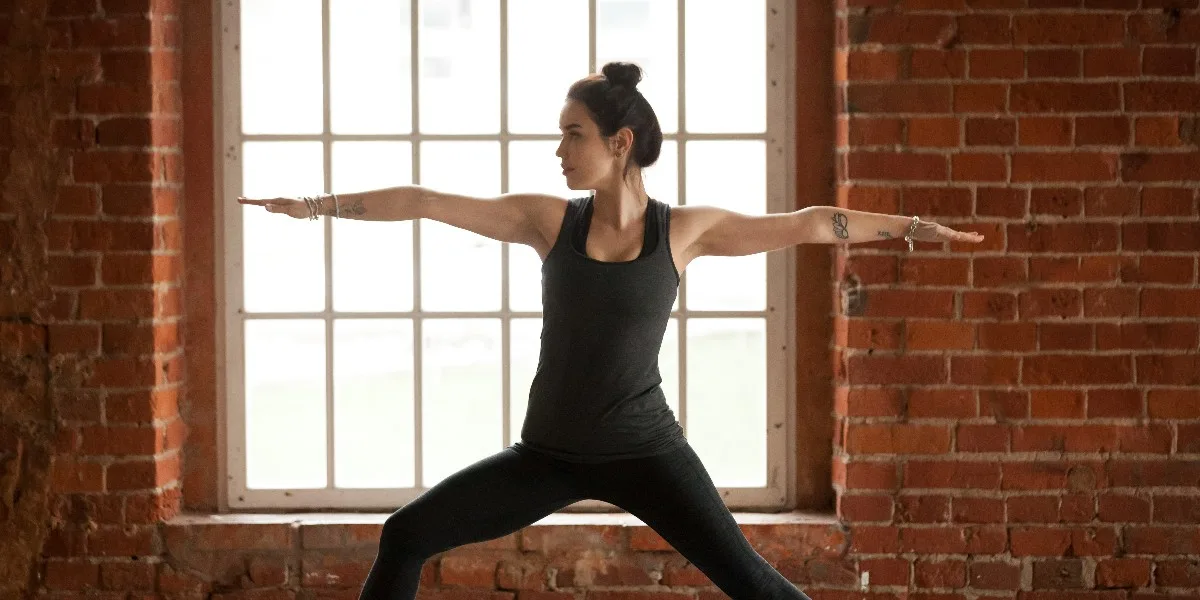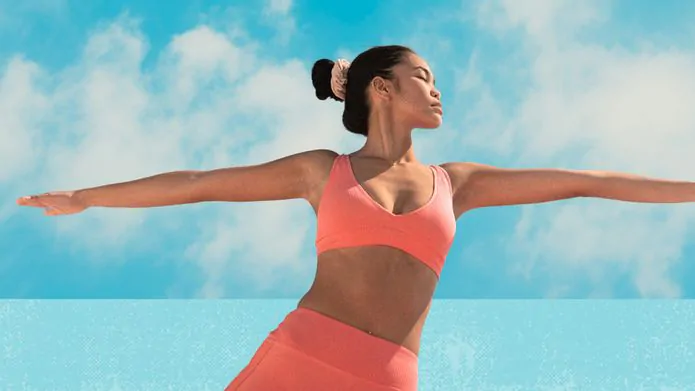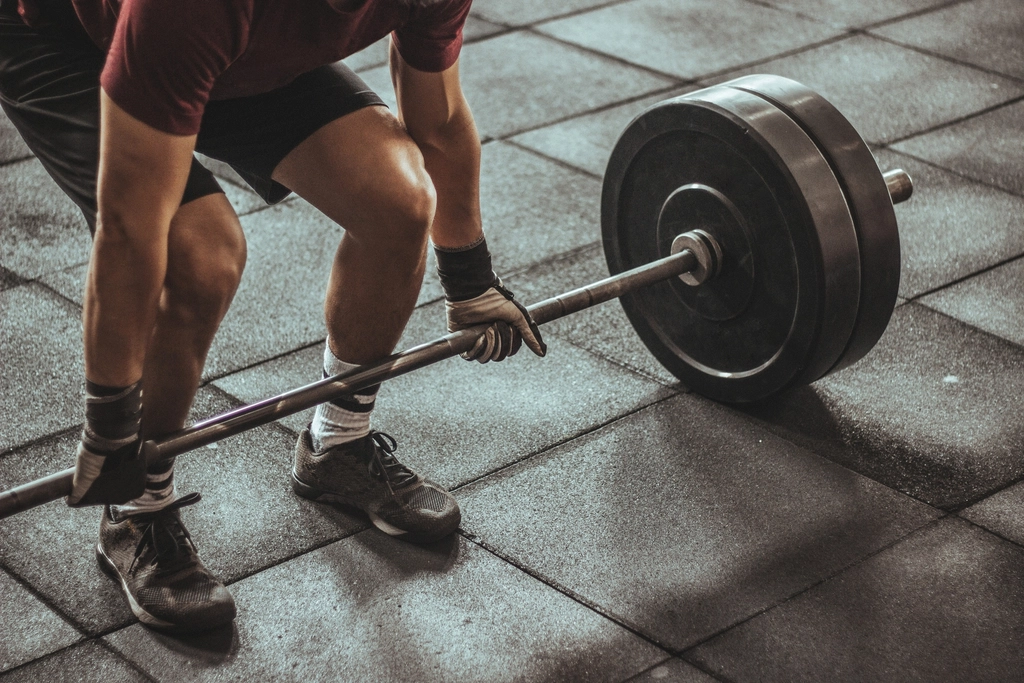Virabhadrasana, commonly known as the Warrior Pose, is a powerful standing pose that embodies strength, focus, and the spirit of a warrior. This iconic pose and its variations are staples in many yoga practices, celebrated for their ability to improve balance, flexibility, and stamina. Named after the mythical warrior Virabhadra, these poses not only strengthen the body but also instill a sense of inner strength and confidence.
Virabhadrasana I (Warrior Pose I)
Step-by-step instructions:
- Start in Tadasana (Mountain Pose).
- Step or lightly jump your feet 3.5 to 4 feet apart.
- Raise your arms perpendicular to the floor and parallel to each other, palms facing down.
- Turn your left foot slightly to the right and your right foot out 90 degrees.
- Align the right heel with the left heel.
- Exhale and rotate your torso to the right, squaring your hip as much as possible with the front edge of the mat.
- Bend your right knee over the right ankle, so that the shin is perpendicular to the floor.
- Reach out through your arms, lifting the ribcage away from the pelvis.
- Gaze over your right hand. Hold for up to one minute.
- To release, inhale as you straighten your right knee. Reverse the feet and repeat for the same length of time on the left side.
Tips for beginners:
- Ensure your bent knee doesn’t move beyond your ankle to avoid strain.
- If balancing is difficult, decrease the distance between your feet.
Benefits:
- Strengthens the shoulders, arms, legs, ankles, and back.
- Improves focus, balance, and stability.
- Energizes the entire body.
Virabhadrasana II (Warrior Pose II)
Step-by-step instructions:
- Begin in Tadasana (Mountain Pose).
- Step or lightly jump your feet 3.5 to 4 feet apart.
- Raise your arms to the sides to shoulder height, palms facing down.
- Turn your left foot in slightly and your right foot out to 90 degrees.
- Align the right heel with the left heel.
- Exhale and bend your right knee over the right ankle, so the thigh is parallel to the floor.
- Stretch your arms out, directly over your legs, gazing out over your right hand.
- Keep the torso even between the hips, torso stacked directly over the pelvis.
- Hold for up to one minute, then inhale as you come up. Repeat on the left side.
Tips for beginners:
- Use a wall to support your back if you find it difficult to balance.
- Keep a slight bend in the elbow to avoid hyperextension.
Benefits:
- Increases stamina and concentration.
- Tones the legs, ankles, and feet.
- Opens the chest and shoulders, aiding in breath work.
Virabhadrasana III (Warrior Pose III)
Step-by-step instructions:
- Begin in Virabhadrasana I with your right foot forward.
- Shift your weight onto your right foot.
- Exhale and lift your left leg up and back, hinging at the hips to bring your torso forward and parallel to the floor.
- Extend your arms forward, beside your head, or back along your sides.
- Keep your gaze directed downward for balance.
- Hold for up to one minute, then step back into Virabhadrasana I and switch sides.
Tips for beginners:
- Practice near a wall to help maintain balance.
- Keep a slight bend in the standing leg to avoid locking the knee.
Benefits:
- Strengthens the legs, shoulders, and arms.
- Improves balance and posture.
- Enhances core strength and stability.
Virabhadrasana Variation (Humble Warrior Pose)
Step-by-step instructions:
- Start in Virabhadrasana II with your right foot forward.
- Bring your hands behind your back, interlace your fingers, and extend your arms.
- Exhale and lean forward, bringing your torso inside of your right thigh.
- Lower your head toward the ground, lifting your arms overhead.
- Press firmly into your feet and maintain the integrity of Virabhadrasana II in your legs.
- Hold for several breaths, then inhale to come up. Switch sides and repeat.
Tips for beginners:
- If clasping your hands behind your back is difficult, hold a strap between your hands.
- Keep the front knee bent at a right angle.
Benefits:
- Opens the shoulders and chest.
- Strengthens and stretches the legs and ankles.
- Enhances mental focus and balance.
Conclusion and Practice Tips
Incorporating these four variations of Virabhadrasana into your yoga practice can significantly improve your balance, flexibility, and strength. Remember, yoga is about progress, not perfection. Listen to your body, practice regularly, and respect your limits. Over time, you will notice improvements not only in your physical capabilities but also in your mental and emotional balance.
Disclaimer : The information provided on myhealthpage.in is not a substitute for professional medical advice, diagnosis, or treatment. If you have any questions or concerns about your health, please consult with a licensed physician or other qualified healthcare provider.
Image by yanalya on Freepik






